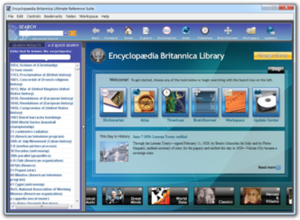What is Courseware?
30/07/2011 09:46Educational software is computer software, the primary purpose of which is teaching or self-learning.
Courseware
Courseware is a term that combines the words 'course' with 'software'. Its meaning originally was used to describe additional educational material intended as kits for teachers or trainers or as tutorials for students, usually packaged for use with a computer. The term's meaning and usage has expanded and can refer to the entire course and any additional material when used in reference an online or 'computer formatted' classroom. Many companies are using the term to describe the entire "package" consisting of one 'class' or 'course' bundled together with the various lessons, tests, and other material needed. The courseware itself can be in different formats, some are only available online such as html pages, while others can be downloaded in pdf files or other types of document files. Many forms of e-learning are now being blended with term courseware. Most leading educational companies solicit or include courseware with their training packages. In 1992 a company called SCORE! Educational Centers formed to deliver to individual consumers courseware based on personalization technology that was previously only available to select schools and the Education Program for Gifted Youth.[3]
Classroom aids
A further category of educational software is software designed for use in school classrooms. Typically such software may be projected onto a large whiteboard at the front of the class and/or run simultaneously on a network of desktop computers in a classroom. This type of software is often called classroom management software. While teachers often choose to use educational software from other categories in their IT suites (e.g. reference works, children’s software), a whole category of educational software has grown up specifically intended to assist classroom teaching. Branding has been less strong in this category than in those categories orientated towards home users. Software titles are often very specialised and produced by a wide variety of manufacturers, including many established educational book publishers.
- The schoolzone.co.uk Guide to Digital Resources, 5th ed. (2005) - An up-to-date full-colour guide with reviews of around 500 selected and recommended products, categorised by subject area, albeit specific to the UK school system.
Assessment software
With the impact of environmental damage and the need for institutions to become "paperless" [4], more educational institutions are seeking alternative ways of assessment and testing, which has always traditionally been known to use up vasts amount of paper. Assessment software refers to software with a primary purpose of assessing and testing students in a virtual environment. Assessment software allows students to complete tests and examinations using a computer, usually networked. The software then scores each test transcript and outputs results for each student. Assessment software is available in various delivery methods, the most popular being self-hosted software, online software and hand-held voting systems. Proprietary software and open-source software systems are available. While technically falling into the Courseware category (see above), Moodle is an example of open-source software with an assessment component that is gaining popularity. Other popular international assessment systems include QuestionMark and EvaluNet XT.
Edutainment
In a broader sense, the term edutainment describes an intentional merger of computer games and educational software into a single product (and could therefore also comprise more serious titles described above under children’s learning software). In the narrower sense used here, the term describes educational software which is primarily about entertainment, but tends to educate as well and sells itself partly under the educational umbrella. Software of this kind is not structured towards school curricula, does not normally involve educational advisors, and does not focus on core skills such as literacy and numeracy.
Reference software

Many publishers of print dictionaries and encyclopedias have been involved in the production of educational reference software since the mid-1990s. They were joined in the reference software market by both startup companies and established software publishers, most notably Microsoft.
The first commercial reference software products were reformulations of existing content into CD-ROM editions, often supplemented with new multimedia content, including compressed video and sound. More recent products made use of internet technologies, to supplement CD-ROM products, then, more recently, to replace them entirely.
Wikipedia and its offspins (such as Wiktionary) marked a new departure in educational reference software. Previously, encyclopedias and dictionaries had compiled their contents on the basis of invited and closed teams of specialists. The Wiki concept has allowed for the development of collaborative reference works through open cooperation incorporating experts and non-experts.
Educational software on custom platforms
Some manufacturers regarded normal personal computers as an inappropriate platform for learning software for younger children and produced custom child-friendly pieces of hardware instead. The hardware and software is generally combined into a single product, such as a child laptop-lookalike. The laptop keyboard for younger children follows an alphabetic order and the qwerty order for the older ones. The most well-known example are Leapfrog products. These include imaginatively designed hand-held consoles with a variety of pluggable educational game cartridges and book-like electronic devices into which a variety of electronic books can be loaded. These products are more portable than general laptop computers, but have a much more limited range of purposes, concentrating on literacy.
Source: https://en.wikipedia.org/wiki/Educational_software
———
Back